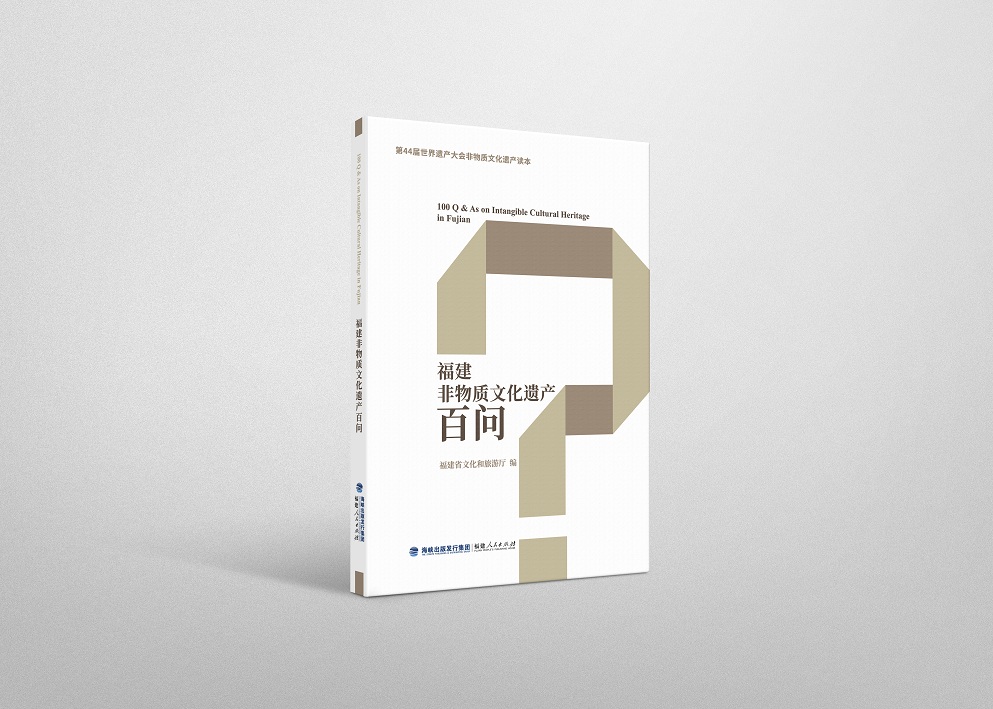·非遗百问·
序 言
为激发社会大众对非物质文化遗产保护的参与意识,同时为迎接在福州举办的第 44届世界遗产大会,福建省非物质文化遗产保护中心与福建省炎黄文化研究会共同组织编撰《福建非物质文化遗产百问》读物。图书旨在以简洁易懂的语言,阐释非遗知识,回应群众对非遗的关切,也期望能为今后开展有关非遗知识测验、知识竞赛等活动提供一种参考。
保护和传承非物质文化遗产,福建有着得天独厚的条件。这里地处祖国东南沿海,与台湾隔海相望,海洋文化、闽越文化与中原文化在这里汇聚融合,形成海陆特色兼具、多元文化并存的格局。一些在中原地区早已消失的文化形态和种类,在福建被很好地保存着,而且呈现出持续发展的态势。非遗的保护与传承构成福建绚烂多彩的文化景观。例如福建各地原生态的传统地方戏曲、手工技艺、民间歌舞和民间信俗等,无不彰显着八闽文化的薪火相传和特色,传递着两岸文化同根同源的历史信息。
福建对历史文化,包括对非物质文化的保护工作,得益于党和政府的重视。1991年 3月,时任福建省委常委、福州市委书记的习近平同志在福州市保护文化遗产现场办公会上就提出:“评价一个制度、一种力量是进步还是反动,重要的一点是看它对待历史、文化的态度。”这就极其尖锐地把保护文化遗产工作,提到了相当的政治高度。他在福建工作的 17年半里,对福建文化和自然遗产的保护工作始终十分重视,不仅提出了许多前瞻性的理念和观点,还直接推动保护和传承工作,为延续福建文化的“根”与“魂”奠定了坚实的基础,也给福建人民留下了宝贵的精神财富。
正是有这样良好的文化环境和氛围,福建多彩绚丽的非物质文化遗产得到有力的保护和传承。数十年来,福建持续开展普查工作并基本确立了四级非物质文化遗产名录体系,获批国家级非遗项目 130项、省级非遗代表性项目 517项(不含 13个新增保护单位);国家级传承人 143名、省级传承人 735名,均居全国先进行列。尤其是在联合国教科文组织《保护非物质文化遗产公约》规定的 3个序列中,福建共有 7个项目入选,成为我国首个入选联合国教科文组织非遗保护全序列的省份。2019年 7月,联合国教科文组织世界遗产委员会宣布把 2020年第 44届世界遗产大会交由福州市承办,体现了对福建省文化与自然遗产(包括非物质文化遗产)保护工作的充分肯定和更高期望。
非物质文化遗产是我们民族文化的精华、民族智慧的结晶,是我们赖以坚持文化自信的重要源泉。做好非物质文化遗产的保护和传承,就是守护我们民族的精神家园。这项工作不仅是各级党政领导和文化部门的神圣职责,也是国家法律赋予我们每个公民的应尽义务。为此要充分调动社会各界的积极性,拓宽社会力量参与渠道,完善多方参与和多元投入机制,扩大公众的知情权、参与权和监督权,从而把保护和传承的各项任务落实到社区、农村、企业、机关和学校,着力形成全社会共谋、共建、共管、共评、共享的工作格局。我们期盼社会各界进一步树立保护非遗人人有责、传承非遗个个尽责的主人翁意识,使我们的非物质文化遗产能在良好的文化生态中得到传承发展,绵延永续、生生不息。
马照南
2020年7月
Preface
In order to raise the public’s awareness of engagement in the protection of intangible cultural heritage and also to prepare for the 44th Session of the World Heritage Committee to be held in Fuzhou , the Intangible Cultural Heritage Protection Centre and Yan & Huang Cultural Institute in Fujian Province have jointly compiled this 100 Q&As on Intangible Cultural Heritage in Fujian. This handbook is intended to interpret intangible cultural heritage-related knowledge in precise language as a response to the public’s concerns on intangible cultural heritage. It is also expected that this handbook can serve as a popular reading material for activities such as intangible cultural heritage-related knowledge tests and competitions later on.
Fujian enjoys favorable conditions in the protection and inheritance of intangible cultural heritage. Lying in the coastal area of Southeast China and separated apart from Taiwan Island by sea, Fujian stands as a hub where Marine Culture, Minyue Culture and Central Plain Culture converge and blend, which constitutes the diverse Fujian Culture integrating both marine and terrestrial features. Some cultural forms and categories disappeared in China’s Central Plain area long time ago are still well preserved and even booming continuously in Fujian. The protection and inheritance of intangible cultural heritage has contributed to the splendid, colorful cultural landscape in Fujian. For instance, indigenous traditional local operas, handicrafts, folk songs and dances and folk beliefs and customs in Fujian have demonstrated the inheritance and development of Bamin (literally “eight subordinate areas comprising Fujian”) Culture and evidenced the fact that the cultures on both sides of the Taiwan Strait share the same root.
Fujian’s commitment to the protection of historical cultures, including intangible cultures is geared by the serious attention paid by the China’s ruling Party (CPC) and government. In March, 1991, Xi Jinping, the then Municipal CPC General Secretary of Fuzhou (capital of Fujian) and also a member of the Provincial CPC Standing Committee, remarked in an on-site executive meeting for Fuzhou’s cultural heritage protection that “an important criteria to determine whether one system and power is advanced or not is its attitude towards history and culture”. This remark sharply categorizes cultural heritage protection as a politically strategic mission. During his 17-year governance in Fujian, Xi Jinping consistently attached great importance to the protection of Fujian’s natural and cultural heritage, raised forward-looking thinking and views, and directly promoted the protection and inheritance work, laying a solid foundation for the further development of “root” and “spirit” of Fujian cultures and retaining precious spiritual assets for Fujian people.
Thanks to such favorable cultural environment and atmosphere, splendid, colorful intangible cultural heritage in Fujian has been robustly protected and inherited. For several decades, Fujian has been continuously conducting census work and has established a 4-grade intangible cultural heritage list system, under which 130 programs are granted as national intangible cultural heritages, 517 as representative provincial ones (excluding the 13 units newly listed), 143 people are identified as national inheritors and 735 as provincial inheritors, and these figures range top level across China. Particularly, 7 programs in Fujian have been selected by United Nations Educational, Scientific and Cultural Organization (UNESCO) into the three world intangible cultural heritage sequences provided for in Convention for the Safeguarding of the Intangible Cultural Heritage, which makes Fujian the first province in China to host the full-sequence intangible cultural heritages. In July, 2019, World Heritage Committee of UNESCO declared that the 44th Session of the World Heritage Committee in 2020 would be hosted by Fuzhou, which shows UNESCO’s appreciation of and higher expectation for Fujian’s protection of cultural and natural heritages (including intangible cultural heritages).
Intangible cultural heritages are the essence of Chinese culture, crystal of Chinese wisdom, and significant cornerstone where we build our cultural confidence. Proper protection and inheritance of intangible cultural heritages is to preserve the spiritual homeland of Chinese nation. This task is not only the holy responsibility of all-level governing agencies and cultural authorities, it is also the obligation of each Chinese citizen as provided for in national laws and regulations. Therefore, we shall fully spark the motivation of all walks from life, broaden the engagement channels for social forces, optimize multi-party participation and diversified input mechanism, enhance the public’s rights to know, rights to participate and rights to supervise, and eventually assign the tasks of protection and inheritance to various communities, villages, enterprises, government agencies and schools, creating a work frame enabling people from all walks of life to collaboratively plan, build, manage and review the protection and inheritance and finally to share the outcome thereof. We hope that all walks of life would take the initiative of being responsible and devoted to the protection and inheritance of intangible cultural heritages, so that our intangible cultural heritages will achieve sustainable development and prosperity in healthy cultural environment.
Ma Zhaonan
July,2020



